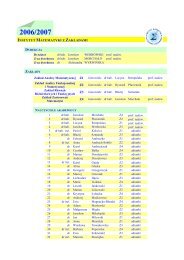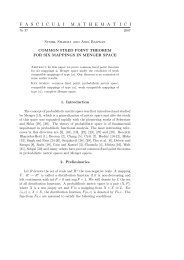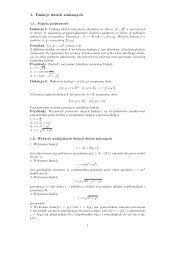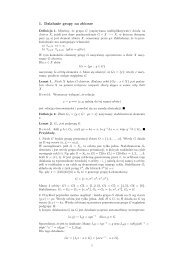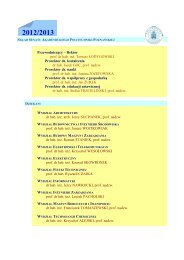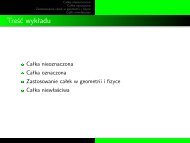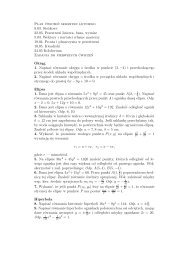F A S C I C U L I M A T H E M A T I C I
F A S C I C U L I M A T H E M A T I C I
F A S C I C U L I M A T H E M A T I C I
You also want an ePaper? Increase the reach of your titles
YUMPU automatically turns print PDFs into web optimized ePapers that Google loves.
120 Walter S. SizerLetS = {x ∣ ∣ x ≥ E, and for all y ∈ [E, x], if y = x−1 = x 0 ,then x 0 > x 1 > . . . > x k ≥ x k+1and x 2k+1 ≥ x 2k > x 2k−1 > . . . > x k+1 and x 2k+2 ≤ x 2k }.Then E ∈ S so S is non-empty, and E 1 /∈ S so S is bounded above.Again the least upper bound of S gives a solution with x 2k+2 = x 2k , that is,a solution of period 4k + 5. The symmetry of the solution before and afterx 2k = x 2k+2 shows that this solution consists of two cycles.(B) is proved similarly.Likewise we getTheorem 5. Consider α to be variable, α > 1, and take x −1 = x 0 = 1(as in [2]). Then for any odd integer n greater than or equal to 19 there isa value of α giving a two cycle period n solution.Proof. The proof is adapted from proofs in [2] in a manner similar tothe proof of Theorem 4. The requirement n ≥ 19 is added to avoid gettingthe equilibrium solution.Adapting the proof of theorem 4 to get periodic solutions of period k withn cycles, where k/n ≥ 7, seems a formidable task at best. It would seem adifferent, as yet untried, approach will be needed to prove this result.6. Problems1. (Ladas) For α > 1 and x −1, x 0> 0, show every solution to May’s hostparasitoid equation is bounded.2. Show that no two cycles in a given solution to equation (1) differ inlength by more than one element. (This could be used to solve problem 3).3. Show that for some values of α equation (1) has periodic solutions ofperiod k with n cycles whenever k/n ≥ 7.Also see [2].References[1] Ladas G., Tovbis A., Tzanetopoulos G., On May’s host parasitoidmodel, Journal of Difference Equations and Applications, 2(1996), 195-204.[2] Sizer W.S., Periodicity in May’s host parasitoid equation, Advances in DiscreteDynamical Systems, S. Elaydi et al., eds, Tokyo: Mathematical Societyof Japan, (2009), 333-337.



